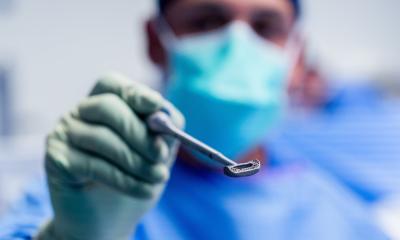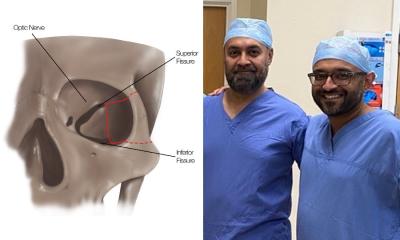
News • Tumor removal
3D printed kidney helps save woman's organ
Doctors and scientists at Intermountain Medical Center in Salt Lake City printed and used a 3D kidney to help save a patient's organ during a complicated tumor-removal procedural. The 3D-printed model allowed doctors to study the patient's kidney in 3D to determine how to best remove the tumor as it was located in a precarious location adjacent to vital arteries and veins. Thanks to the model of the organ, doctors were able to maneuver around those sensitive areas and successfully remove the tumor and ultimately save the patient's kidney.
Without the 3-D model, the visual images of the CT scans would not have allowed us to identify this nub prior to the surgery
Jay Bishoff, MD
Linda Green's case was particularly precarious because her tumor was in the "business section" of the kidney: near an artery, veins and the ureter. It took a multi-disciplinary team, including collaboration between doctors at Intermountain Medical Center and specialists at Intermountain Healthcare's Transformation Laboratory, to find a solution to her unique medical problem.
Intermountain Medical Center Urological Institute director Jay Bishoff, MD, and radiologist Talmage Shill, MD, prepared CT scans to produce a 3D rendering of Green's kidney using technology at the Intermountain Transformation Lab, a facility that is the only one of it's kind in the Intermountain West.
Transformation Lab specialists Cory Smith and Billy Prows worked with Dr. Bishoff and Dr. Shill to render the CT scans for 3D printing. The team rendered and printed the model in two halves, so Dr. Bishoff could examine exactly how the tumor attached to the kidney. This is how he found a small nub that extended up into a pocket where the kidney collects urine. "Without the 3-D model, the visual images of the CT scans would not have allowed us to identify this nub prior to the surgery," he said. "The 3D printing technology allowed us to prepare a more complete plan for the patient's surgery, show the patient the complexities of the procedure and what would be done during surgery to remove the tumor and save the kidney."
While this technology is in its infancy, it is a big step forward in using new technologies like 3D printing to improve patient care
Jay Bishoff, MD
Dr. Bishoff not only used the model to prepare for the surgery, but also brought it into the operating room to reference during the procedure. Through the multi-disciplinary team's efforts, they managed to remove the tumor and save Green's kidney. "I'm just so thankful for everybody at the hospital who was involved and cared," Green said. Dr. Bishoff was the last of many doctors to examine Green's case, and she felt "totally confident" in his ability to perform the surgery. "It was like a night-and-day difference, and I completely trust him too. Dr. Bishoff kept me informed and called me personally, which I very much appreciated."
The Intermountain Healthcare Transformation Lab gathers cutting-edge technologies and assembles creative and experienced personnel to advance healthcare practices. "We're giving doctors additional visual tools to see the anatomy in a different way," Smith said. "In the transformation lab we talk about reimagining imaging -- it's the evolution of imaging."
The Intermountain Urological Institute tracks urological patient outcomes to determine best practices. The institute is at the forefront of evidence-based and advanced-technological treatment methods. "While this technology is in its infancy, it is a big step forward in using new technologies like 3D printing to improve patient care," Dr. Bishoff said.
Source: Intermountain Medical Center
12.07.2016











